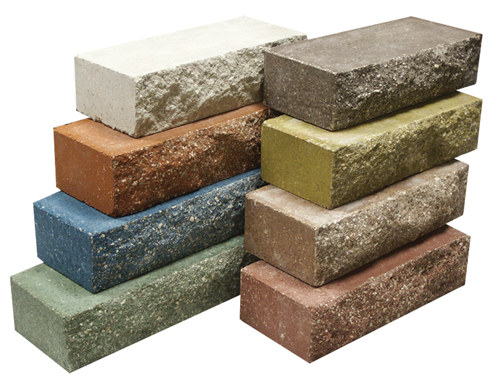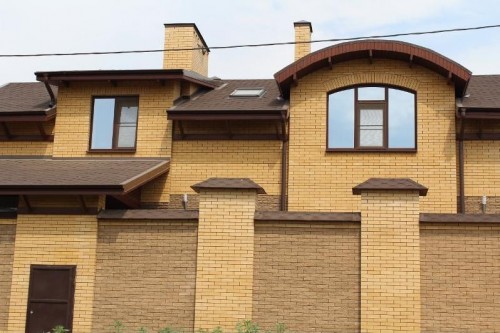There is not a single person who would not know what the brick looks like. This building material is also popular as a tree. The number of brick varieties is impressive. This allows you to satisfy the most sophisticated owners. In this article, consider the most popular types of bricks, their use, as well as individual features.
Content
Why brick?
Security is primarily the motto of many. Fire-resistant material from which you can build a real fortress - this is how the brick is characterized. He is not afraid of fires, can't do or settle in the colony of insects like a tree. This is a lot of advantages. I am glad and the versatility of the material. It is used everywhere: build houses, household buildings (sheds, woodwives), homemade living domestic housing (pigbirds, cowpers), with his help spread paths.
The strength and reliability of the material is very pleased. The durability of the building brick is the following dignity. Houses from this material are well kept warm. Yes, and the appearance of a certain expressiveness in itself. Bricks are preferred in front of a tree, although it is not cheap.
Brick use
Wherever you are, look around. Definitely, in the field of view will be the mass of brick products. It is involved almost everywhere, it is only worth looking at carefully. Different types of this material skillfully hid in the facades of houses, foundations, magnificent fences.
What are the types of bricks?
Material is divided into different criteria. It also imposes requirements prescribed in state standards. Most people share brick on white and red. It is difficult to argue with them, because it looks like that in reality, but it is worth trying. Having in stock a few good arguments, you will feel much more confident, choosing one or another kind of brick in any construction supermarket.
Material
Excellent criterion for classification. Obviously, there is a place from which a brick has manufactured. How do this seek a strong building material, what is needed for this? In fact, not so much and it is necessary - clay, quartz sand, air lime. Of course, quite a few additives are used, but their number is completely insignificant.
So, based on the material, the brick is divided into ceramic and silicate. Sometimes another type is distinguished - refractory. They are very similar, for example, form and sizes. In all other, the principal differences are observed.
- Ceramic bricks are made of clay. The firing is the mandatory stage of its manufacture. The area of \u200b\u200bits use is impressive - from the facing and before the construction of carriers and enclosing structures. The refractory brick is used where it is really hot (these are chimneys, furnaces, etc.).
- Silicate brick is not fundamentally similar to its above fellow. In its composition, quartz sand (90%) and air lime (10%), not counting the minor amount of additives. The material is also processed differently: without firing, but with a saturated water vapor in an autoclave. The process takes place at high temperatures and pressure. Nevertheless, this hardening does not allow the use of brick to build fireplaces and chimneys.
Purpose
With this criterion, you can bring the following classification:
- ordinary (construction);
- facing brick;
- Stove.
All of them are subspecies of ceramic bricks. It boasts not only high strength and density, but also frost resistance. Most often is performed in red, but if you want to want to get the construction parallelepipeds of yellow and apricot shades. And it is not standard and beautiful.
Facing brick is also called facial, facade, finishing. Based on this, it is clear that much attention is paid to appearance. Ideally, each brick has the right form, one-photon color gamut, clear faces. The main function is decorative. Indeed, such structures to look compared to other types of bricks, the photo of the facing building material is confirmed.
The size
This parameter also matters. There are standard (250x120x65 mm), double (250x120x138 mm) and one and a half brick (250x120x88 mm). It is easy to guess that this building materials of the greatest size significantly accelerates the construction process. With the help of small bricks it is easier to realize some decorative idea.
The presence of emptiness
It happens hollow and full-length brick. The first option is used where excessive loads on the design are excluded. There are also special requirements - the amount of emptiness should not be more than 13% of its total volume. This material is also called slotted and holes. Empties are usually square, round or oval.
Interesting about brick
Decorative brick can also look elegantly, you just need to not be afraid to fantasize. His face is quite funny called - bed, stitch, spoons. Few people know, but the brick is the subject of collecting. It is used in the landscape design. The primitive brick was not at all rectangular, and square. In addition, he was flat and called Pllinfi.

























